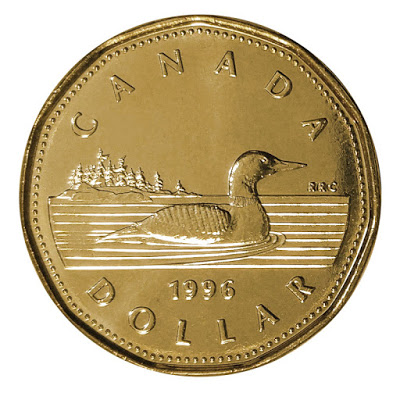Overview: Record high closes yesterday for the S&P 500 and NASDAQ have done little to help global equities today. Most of the Asia Pacific region markets, but Japan and Australia slipped ahead of the weekend while still holding on to gains for the week. Europe's Dow Jones Stoxx 600 is threatening to snap a four-day advance, and US futures are trading a little lower. The US 10-year yield reached 1.125% in the middle of the week and is extending yesterday's recovery to nearly 1.25%, a couple of basis points higher on the week. European yields have firmed today too. The dollar is bid ahead of the jobs report, with the Japanese yen the most resilient. Emerging market currencies are mostly lower, with the JP Morgan EM currency index off for the fourth consecutive
Topics:
Marc Chandler considers the following as important: 4.) Marc to Market, 4) FX Trends, Bank of England, Brazil, Canada, Currency Movement, Featured, Federal Reserve, Japan, newsletter, RBA, USD
This could be interesting, too:
Nachrichten Ticker - www.finanzen.ch writes Die Performance der Kryptowährungen in KW 9: Das hat sich bei Bitcoin, Ether & Co. getan
Nachrichten Ticker - www.finanzen.ch writes Wer verbirgt sich hinter der Ethereum-Technologie?
Martin Hartmann writes Eine Analyse nach den Lehren von Milton Friedman
Marc Chandler writes March 2025 Monthly
Overview: Record high closes yesterday for the S&P 500 and NASDAQ have done little to help global equities today. Most of the Asia Pacific region markets, but Japan and Australia slipped ahead of the weekend while still holding on to gains for the week. Europe's Dow Jones Stoxx 600 is threatening to snap a four-day advance, and US futures are trading a little lower. The US 10-year yield reached 1.125% in the middle of the week and is extending yesterday's recovery to nearly 1.25%, a couple of basis points higher on the week. European yields have firmed today too. The dollar is bid ahead of the jobs report, with the Japanese yen the most resilient. Emerging market currencies are mostly lower, with the JP Morgan EM currency index off for the fourth consecutive session and is set to post its fifth decline in six weeks. Gold was turned back from the $1830 area in the middle of the week and is straddling the $1800-area today. The lower end of the recent range is near $1790. September WTI is extending its recovery after reaching almost $67.60 yesterday to trade near $69.75 today. It settled slightly below $74.00 last week. This week's loss of around 6%, if sustained, would be the largest weekly decline since last October. Copper is trading higher for the second session this week and near $440 is off a little less than 2% this week. Coming into today, the CRB Index is off 1.3% this week. If it does not recover, it will be only the third weekly decline since late May.
Asia Pacific
Japanese data disappointed. June household spending was expected to have risen by 0.2% year-over-year but instead imploded by 5.1%. This reflected a 3.2% decline in the month alone. The formal emergencies and social restrictions are taking a toll. Moreover, fuel for spending, and labor earnings were weak. Labor cash earnings were expected to have risen 1.1% year-over-year. Instead, they fell by 0.1% and by 0.4% when adjusted for inflation. Japan reports Q2 GDP next week (August 16) and helped by a strong pickup in business investment, economists in Bloomberg's survey look for a 0.2% expansion after a 1.0% contraction in Q2.
The Reserve Bank of Australia welcomed the lower exchange rate that it sees as a result of its monetary stimulus. However, record cases of the virus in Sydney despite the extended (six-week) lockdown may have also weighed on the currency today, which is paring its weekly gains, the first since June. Australian stocks are at record highs, led by the banking and technology sectors. RBA Governor Lowe assured investors that the central bank is prepared to adjust policy if the virus threatens the medium-term economic outlook. Note that the price of one of Australia's most important exports, iron ore, is off 4.5% this week, its third weekly decline. It is off by more than 20% since the middle of last month, partly due to China's crackdown on the steel industry, which included orders to cut the output in H2 in mills in northern China.
The recovery of US yields corresponds with the recovery of the dollar against the yen. The greenback staged a key upside reversal on Wednesday from a low near JPY108.70 to reach a high today of almost JPY109.90, where the 20-day moving average is found and the (61.8%) retracement of the latest leg down from July 23 high (~JPY110.60). There is an option for nearly $500 mln at JPY110.00 that expires today. The Australian dollar is trading inside yesterday's range, which itself was inside Wednesday's range (~$0.7370-$0.7425). There is an expiring option for almost A$620 mln at $0.7400. Initial support is seen in the $0.7370-$0.7380 band. The Chinese yuan remained in narrow ranges all week, and today's range was even narrower than yesterday. Amid great uncertainty over Chinese policies and its campaign via editorials, officials have maintained a stable yuan. The daily change this week exceeded 0.1% once. The net change was more than that three times last week and three times in the previous week. The fixings have been tight to expectations. Today's reference rate was set at CNY6.4625, and the median projection in Bloomberg's survey was for CNY6.4624.
Europe
At the same time that the Bank of England formally recognized that it could adopt a negative base rate if needed, the market boosted the likelihood of a rate hike from the middle of next year. The BOE recognized that inflation may accelerate to 4% later this year, and while most of it will be temporary, a modest tightening of policy will likely be needed in the next three years. It was a clear demonstration of the obvious and the short-term interest rate market barely noticed. Consider that the June 2022 and the December 2022 short-sterling futures (three-month deposit rate) contracts were at 42 bp and 58 bp respectively in the middle of July. With yesterday's two and three basis point increases, the implied yields stood at 38.5 bp and 47.5 bp, respectively. The UK's two-year yield is in the middle of the two-month trading range (~3 bp to 16 bp). Short-sterling implied yields are up another 3-4 basis points today, and the two-year yield has risen by four basis points to 12.
German industrial production figures were disappointing. The median forecast in Bloomberg's survey anticipated a 0.5% increase, and economists may have been encouraged by the jump in factory orders reported yesterday that were twice as strong as expected. Instead, industrial output slumped 1.3%, and adding insult to injury, revised the May series to show a 0.8% decline instead of -0.3%. This points to downside risk in next week's aggregate report that was expected to show a 0.6% bounce after a 1.0% decline in May. Still, after last week's GDP estimate, Q2 data seems dated.
The euro stalled yesterday in the $1.1850-$1.860 area that had been protected by large options. Today's session lows, near $1.1805, were set in the European morning. There is an option for a billion euros at $1.1800 that expires today and another at $1.1825 for 645 mln euros. The euro posted an outside down day on Wednesday, stalling at $1.1900. A break of $1.1800 would target last month's lows near $1.1750. The single currency finished last week near $1.1870. Sterling has fared better this week but is also in a narrow range. The week's low was set yesterday a little above $1.3870. The high was set in the middle of the week, slightly below $1.3960. If sterling closes above $1.3905, it would be the first back-to-back weekly gain since the end of May.
America
The US employment report is front and center. The newest Fed Governor Waller may have spoken for others when he said that another couple of strong employment reports would allow the Fed to announce tapering before the end of the year. Unfortunately, it probably overstates the linkage. First, Chair Powell has gone to lengths to explain that, unlike the price stability target, the Fed targets the PCE headline deflator, but there is no one indicator of maximum employment. Second, average monthly private sector nonfarm payroll growth slowed slightly in Q2 from Q1 (468k vs. 489k). Still, most Fed officials recognize that there has been progress toward meeting the conditions to allow a discussion about the pace and composition of the bond purchases. Note that the four-week moving average of weekly initial jobless claims was unchanged in July from June (394k). Yes, a million jobs a month would be great, but wouldn't an average of 500k a month allow the Fed to taper? To say the same thing, it seems that the consensus may have the burden of proof wrongly placed on needing strong jobs growth for the Fed to taper, rather than the barring falling off the current trajectory, the Fed will taper later this year or early next year. It is that "or" that seems to be what is dividing the hawks and doves.
Canada is in a somewhat similar situation. Although it lost jobs in Q2, including full-time positions each month, the Bank of Canada began tapering. Observers talk about central banks looking through near-term inflation, but officials also look through the recent softer labor numbers. The median forecast calls for a 150k increase in Canadian employment last month after a 230k increase (all part-time positions, full-time fell by 33k) in June.
Yesterday, the US and Canada both reported June trade figures. In a study of contrasts, the US reported a record trade deficit of $75.7 bln, while Canada reported its largest merchandise surplus since 2008, driven, of course, by its trade surplus with the US, helped by more and higher-priced energy. Canada's energy exports surged by nearly 23% month-over-month in May. The non-energy trade deficit fell by C$3 bln to C$5.7 bln in June, helped by a 5.5% increase in exports. The initial estimate had the net export function subtracting almost 0.45 percentage points from Q2 US GDP. The US trade deficit in H1 21 was about $100 bln larger than H1 20, of which China captured a little more than $27 bln. The US trade deficit grew by $7 bln with Mexico and $12.5 bln with Canada. The US trade deficit with Germany, France, and Italy rose by a combined $18 bln. It may surprise many that the US deficit with Vietnam swelled by 50% or $14 bln in H1 21 from H1 20.
The US dollar remains firm against the Canadian dollar. It has edged a little higher today, and a positive close would be the fifth in the past six sessions. The week's high was recorded on Tuesday near CAD1.2575, and the low was set on Monday around CAD1.2450. A chunky option for $1.1 bln at CAD1.2525 expires today. A move above CAD1.2580-CAD1.2600 warns of another test on the recent high near CAD1.2800. In the middle of the week, the greenback also recorded an outside up day against the Mexican peso but has subsequently consolidated below MXN20.00. Initial support is seen around MXN19.90. A break of that range may point the direction of the next 0.5% move. The 100 bp hike by Brazil's central bank late Wednesday was unable to give the real much support given the deteriorating domestic political climate. The greenback rose by 1.5% against the real yesterday and settled just shy of BRL5.25, its highest close in three weeks. Nearby resistance is seen around BRL5.30. The 200-day moving average, which the dollar has not traded above since early May, is near BRL5.35.
Disclaimer
Tags: #USD,Bank of England,Brazil,Canada,Currency Movement,Featured,Federal Reserve,Japan,newsletter,RBA









